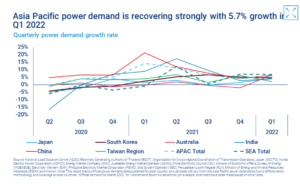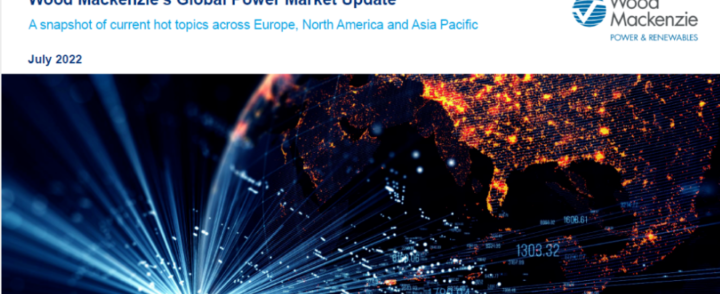Global power markets outlook: the energy transition gathers pace
The first half of 2022 has been eventful for global power markets. The fallout from the Russia-Ukraine war has exacerbated supply issues and driven up prices, which are unlikely to come down in the short term. This has impacted the outlook in all regions, albeit in different ways.
In our regional power and renewables updates we set out the short, medium and longer-term implications for power markets across EMEA, the Americas and APAC.
Fill in the form to download a complimentary insight highlighting the key trends in each region, or read on for a brief overview.
EMEA: Sustained high prices and energy security concerns accelerate the energy transition
Wholesale power prices are above EUR200/MWh in many European markets, and are unlikely to fall back below EUR100/MWh until 2027. Price-induced demand destruction is dampening market volumes in the short term. But in the longer term, we see the EU27+UK market increasing in size by 84% to 5,869 TWh by 2050.
The REPowerEU policy response to the conflict in Ukraine marks a surgical shift in the pace of the energy transition. Legacy bottlenecks in grid expansion, connections and permitting must be removed, but targeted solutions are emerging. Renewables will now contribute 66% of overall EU supply by 2030, with the unfolding policy landscape and high capture prices making wind and solar extremely attractive investments. Green hydrogen is another key focus, while decarbonised gas options (particularly hydrogen and CCUS) are increasingly attractive. Nuclear will also benefit from heightened security concerns to some extent. In contrast, unabated gas generation will decline significantly, while coal phaseout will continue.

APAC
Despite being dampened by China’s renewed Covid lockdowns in Q2 2022, Asia Pacific’s power demand is expected to resume its strong recovery in the second half of the year. Dramatic price increases for LNG, coal, fuel oil and diesel will gradually feed through into end-user power prices which, as elsewhere, will stay high until at least 2025.

With European demand dropping, APAC’s share of global demand growth to 2040 could be even higher than our current 68% forecast. That will drive US$2.9 trillion of investment in power generation in the region over the next decade, including 60% on wind and solar. However, risks to renewables developers are increasing as supply chain and financing costs rise, grid integration issues worsen, and regulators allow projects to be more exposed to market forces. Meanwhile, with wind and solar capacity due to hit more than 50% of peak load in eight Asia Pacific markets by 2030, curtailment risk is also an issue. Unless grid and storage investment is stepped up, power cuts and reliability issues will increase significantly.
Source: WoodMac



